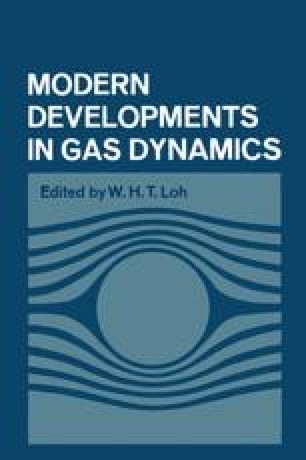
Moreover, this approach allows us to reduce significantly the standard uncertainty related to the gas flow model so that the total uncertainty is decreased by a factor of three. As a result, a new value of the effective area is obtained with a relative difference of from the previous one.

Then, the pressure distribution is recalculated iteratively for the new crevice dimension.

Gas rarefaction and viscosity can be calculated also by Gas Dynamics Toolbox Heat transfer through a rarefied gas confined between two plates Paper. Description The three volumes of Rarefied Gas Dynamicis contain 168 technical papers presented in 44 sessions at the Eighteenth International Symposium on Rarefied Gas Dynamics, which took place at.
#RAREFIED GAS DYNAMICS CALCULATOR PURDUE FREE#
2) Identify gas flow regimes (continuum, slip, transitional, free molecular) and applicable governing equations. Rarefied flow calculator Email: The applet calculates mass flow rates through pipes and orifices over the whole range of the gas rarefaction. Once the pressure distribution is known, the elastic deformations of both piston and sleeve are calculated by finite element analysis. 1) Calculate basic gas properties such as temperature, pressure, flow velocity, gas stresses and fluxes from the molecular velocity distribution function. The effective cross sectional area is completely determined by the pressure distribution in the crevice. The aim of this work is to revise the previous effective cross sectional area of PG39 and its uncertainty by carrying out more exact calculations that consider the effects of rarefied gas flow.

You can also search for this author in PubMed Google Scholar. Computer Center, Academy of Sciences of the USSR, Moscow, Russia. The 32nd International Symposium on Rarefied Gas Dynamics (RGD32 biannual event in RGD originally scheduled in July 2020, Seoul, Republic of Koreawas postponed to the summer of 2022 due to the COVID-19 pandemic. An approximate model of gas flow through the crevice between the piston and sleeve contributed significantly to this uncertainty. Rarefied Gas Dynamics Authors: Mikhail N.
Currently, the piston-cylinder assembly known as PG39 is used as a primary pressure standard at the National Institute of Standards and Technology (NIST) in the range of 20 kPa to 1 MPa with a standard uncertainty of as evaluated in 2006. Let’s look at the four flow regimes characterized by the Knudsen number: Continuum flow (Kn < 0.01) Slip flow (0.01 < Kn < 0.1) Transitional flow (0.1 < Kn <10) Free molecular flow (Kn > 10) These flow regimes are shown in the figure below: A plot showing the main fluid flow regimes for rarefied gas flows.

 0 kommentar(er)
0 kommentar(er)
